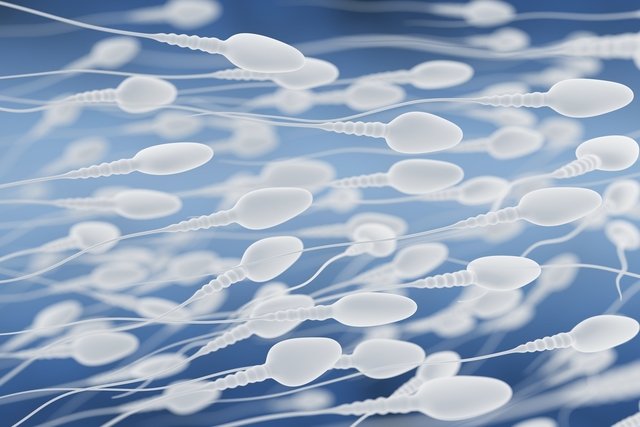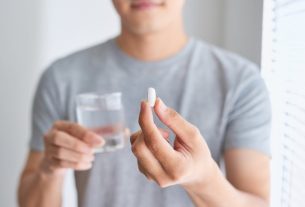Spermatogenesis is the process of creating sperm, which are the male structures responsible for fertilizing the egg.
The process of spermatogenesis begins around the age of 13 and continues throughout life, decreasing in old age. It is a daily process, in which thousands of sperm are produced, which are stored in the epididymis after being produced in the testicle.
Spermatogenesis is a process highly regulated by hormones such as testosterone, luteinizing hormone (LH), and follicle-stimulating hormone (FSH).

Main steps of spermatogenesis
Spermatogenesis is a complex process that lasts between 60 and 80 days and can be divided into 4 stages:
1. Germinal phase
The germinal phase is the first phase of spermatogenesis and occurs when the germ cells from the embryonic period go to the testicles, where they remain inactive and immature, and are called spermatogonia.
When the boy reaches puberty, the spermatogonia, under the influence of hormones and Sertoli cells, which are inside the testicle, develop more intensely through cell divisions (mitosis) and give rise to primary spermatocytes.
2. Growth phase
The primary spermatocytes formed in the germinal phase increase in size and undergo a process of meiosis, so that their genetic material is duplicated, becoming called secondary spermatocytes.
3. Maturation phase
After formation of the secondary spermatocyte, the maturation process takes place to give rise to the spermatid through meiotic division.
4. Differentiation phase
It corresponds to the period of spermatid transformation into sperm, which lasts approximately 21 days. During the differentiation phase, which can also be called spermiogenesis, two important structures are formed:
- Acrossoma: is a structure present in the head of the sperm that contains several enzymes that allow the sperm to penetrate the woman’s egg;
- Flagellum: structure that allows sperm mobility.
Despite having a flagellum, the sperm formed only actually have motility when they cross the epididymis, acquiring motility and fertilization capacity between 18 and 24 hours.
What affects the process of spermatogenesis
Spermatogenesis is regulated by several hormones that not only favor the development of male sexual organs, but also the production of sperm. One of the main hormones is testosterone, which is a hormone produced by Leydig cells, which are cells present in the testicle. Better understand the function of testosterone and how to increase its production.
In addition to testosterone, luteinizing hormone (LH) and follicle-stimulating hormone (FSH) are also very important for sperm production, as they stimulate Leydig cells to produce testosterone and Sertoli cells, so that the transformation takes place. of spermatids into spermatozoa.
Bibliography
- HALL, John. Textbook of medical physiology. 13 ed. Rio de Janeiro: Elsevier, 2017. 1021-1026.
- MCANINCH, Jack W.; LUE, Tom F. Smith and Tanagho General Urology. 18 ed. Porto Alegre: Artmed, 2014. 687-689.

Sign up for our newsletter and stay up to date with exclusive news
that can transform your routine!
Warning: Undefined array key "title" in /home/storelat/public_html/wp-content/plugins/link-whisper-premium/templates/frontend/related-posts.php on line 12
Warning: Undefined array key "title_tag" in /home/storelat/public_html/wp-content/plugins/link-whisper-premium/templates/frontend/related-posts.php on line 13



